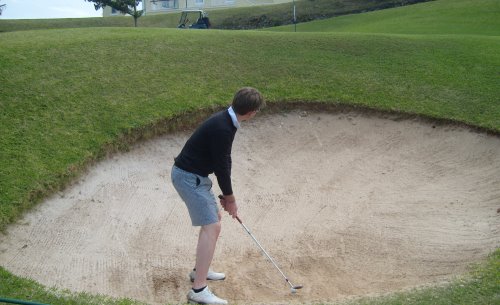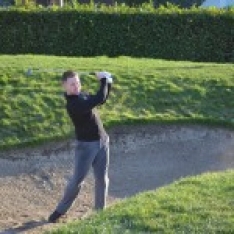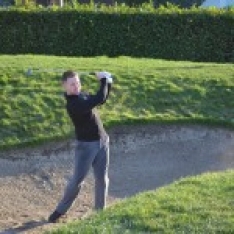Welcome to the second part of my Beginners Guide to Golf Equipment.
This week I’m going to talk about the mid-range irons through to the wedges.
As I explained in my last post, as the irons get higher in number, so their shafts get shorter and the club faces become more lofted. The shorter the shaft and the greater the loft, so the easier the ball is to hit.
However just hitting the ball is one thing, but to gain distance you will need to sacrifice loft, and the four and five irons provide a nice middle-ground to be able to do this.
Whereas beginners and intermediate players may struggle with a 3-iron, the 4 and 5-irons have shorter shafts and so are easier to hit, but will still guarantee you some distance if you strike the ball decently.
Another option for a similar distance would be to use a 7 Wood. This would give you the power of hitting with a wood rather than an iron, but also sacrifices a little bit of the control that an iron gives you, particularly as your game improves and you learn to put backspin on the ball.
The first clubs that beginners are encouraged to learn with are 6 and 7-irons. This is primarily because they are in the mid-range and will give you a realistic feel of the ‘average’ golf club, and also combine the right amount of loft with the right amount of distance for a beginner to practise with, and also gain an understanding of the game with.
A good use for these clubs is also to try just half-swings or ¾ swings to vary the distance on the shots, and give you more control initially over your swing.
A 7-iron is also an ideal club to use for the ‘bump and run’ shot. This shot takes some perfecting, but is primarily used to keep the ball deliberately low – for example when there is a strong wind blowing across the course. In these conditions it may make sense to hit a ‘punchy’ 7-iron low and hard, as opposed to a lofted 8 or 9-iron which could get blown off course by the weather.
In good conditions though, the 8 and 9-irons come into their own for playing attacking shots into the green. The loft gives you the control needed to land the ball as close to the hole as possible.
As above, backspin may also be used to stop the ball from rolling forwards to far once it lands. Backspin comes from striking the back of the ball before the turf. A good tip is to keep the grooves on your iron clubs as clear from dirt as possible, as it’s these that help generate the backspin as they strike the ball. I find the using a tee works really well to do this – you can then use a towel to wipe the club face down afterwards.
Good players will also use a 9-iron from the fringe area around the green, or from longer grass, where both power and control are required.
So finally for this post, let’s take a look at the wedges, starting with the Pitching Wedge, which comes in a variety of lofts, just to confuse you!
The main aim of the pitching wedge is to play shots into the green from less than 100 yards, and the lofts will generally vary from 50 to 53 degrees – as above, the greater the loft, the more height you will generate, and the greater the control you will have.
For shots even closer to the green, some players will also consider the use of a Sand Wedge. As per its title, it is primarily designed to be used from the bunker, and is weighted along the lower edge of the blade to help with the momentum of the shot as it is played. When not being played from the sand, this wedge is also great for generating huge amounts of backspin, ideal when the hole is placed on top of a ridge, or with little room for error, but this is a shot that test even the most experienced of golfers.
The majority of professionals will also carry a Lob Wedge in their bag, for those even more precise shots close to the green. This club will have a loft of up to 60 degrees to generate even more height and control, but very little distance.
So there’s just one more club to cover and that’s the putter – we’ll take a look at that in more detail next week, along with other golfing equipment that will help you in your quest for the perfect round!
In the meantime, if you have any questions about this post or any other aspect of the game, then please drop me a line at james@jamesironsgolf.co.uk .










